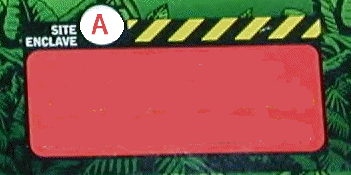LATE JURASSIC MORRISON FORMATION
The Morrison is a widespread deposit in the western United States and Canada. In the north the environment was wetter and swampy on the shore of the proto Pacific Ocean. In the south west it is arid and sandy desert. The Paleozoic flora has been replaced by gymnosperms and flowering plants are not present. The flora has a canopy of large conifers, medium ginkgophytes or cycadophytes. Ferns are wide spread and fern prairies may have existed in the wet season in the areas away from rivers. Horsetails and other pteridophytes exist as ground cover or understory but are not diverse. Updated 073112

Apatosaurus is found throughout the Morrison. It seems unlikely a healthy adult had any predators.
This is the best documented fauna characterized by large sauropods and allosaurids as top predators associated with the gymnosperm flora. Others are the Late Jurassic faunas of Tendaguru and Lourhina, the Early Creteacous Acrocanthosaur-Astrodon and Late Cretaceous Argentinosaurus-Giganotosaurus fauna of South America.

A Diplodocus was likely social and formed herds. The rearing posture was likely to have been uncommon.
Precipitation fell in the western uplands and probably supported a vegetated terrain. The runoff from storms filled the aquifers and surface runoff supported streams that drained toward east. The wet season would have supplied water to seasonal streams and ponds. Fish and other tetrapods expand out from permanent lakes and rivers feed by the ground water levels. The ecology may have best resembled the pattern seen in Northern Australia. The upland terrains could have served as seasonal refuges for dinosaurs during dry seasons or periods of extreme drought in the lowlands.

Brachiosaurus was rare high browser. Most plants grew lower in the Morrison and this favored lower browsers. River environments had river–lining forests in otherwise treeless settings, providing water, shade, food, and shelter for a variety of life forms. Camarasaurs, brachiosaurs, and perhaps other herbivorous dinosaurs that could reach higher food sources probably browsed extensively in the river regions
River environments had river–lining forests in otherwise treeless settings, providing water, shade, food, and shelter for a variety of life forms. Camarasaurs, brachiosaurs, and perhaps other herbivorous dinosaurs that could reach higher food sources probably browsed extensively in the river regions

Stegosaurs are common medium size herbivores. In the Morrison they are larger but not diverse compared to Asian stegosaurs.
